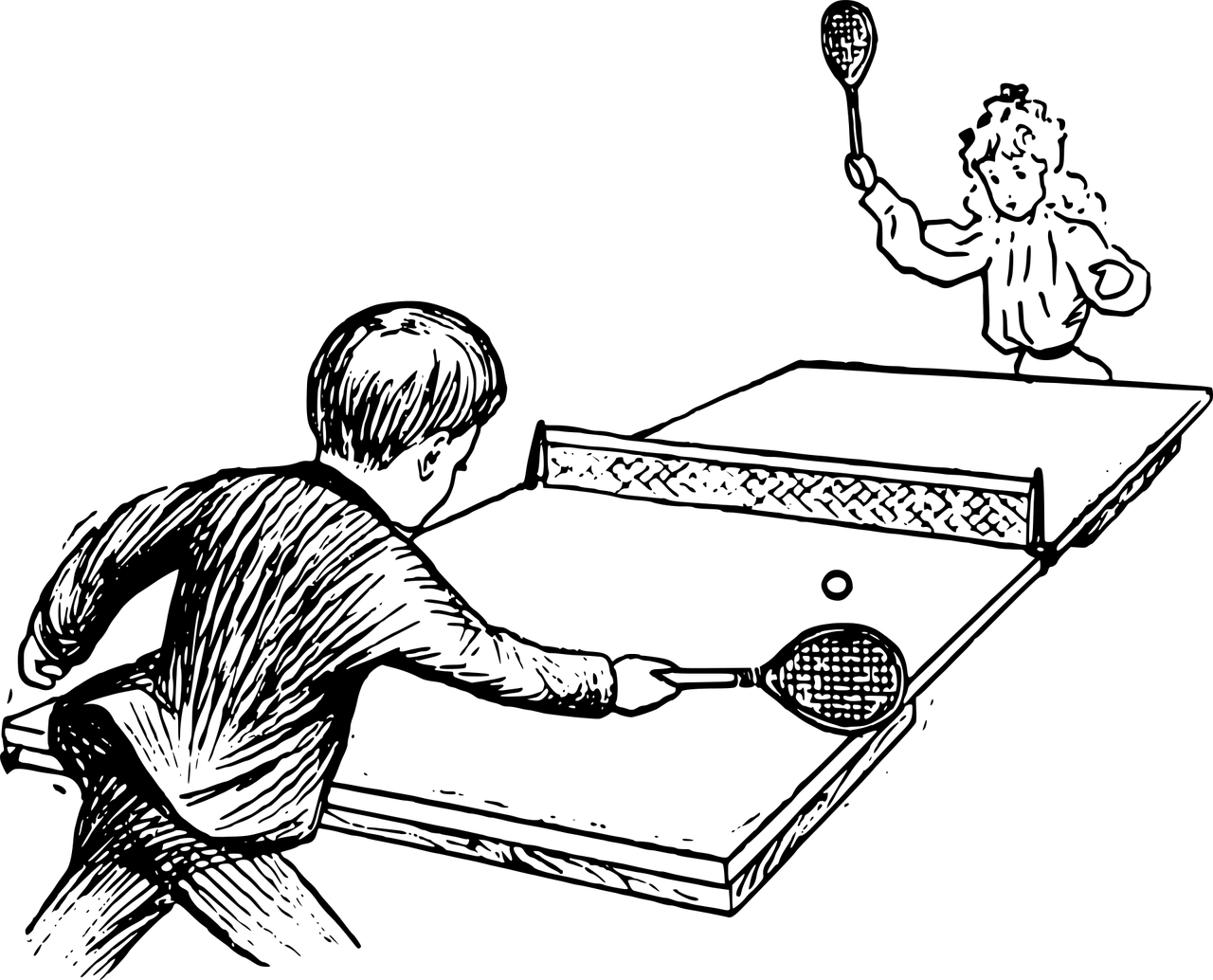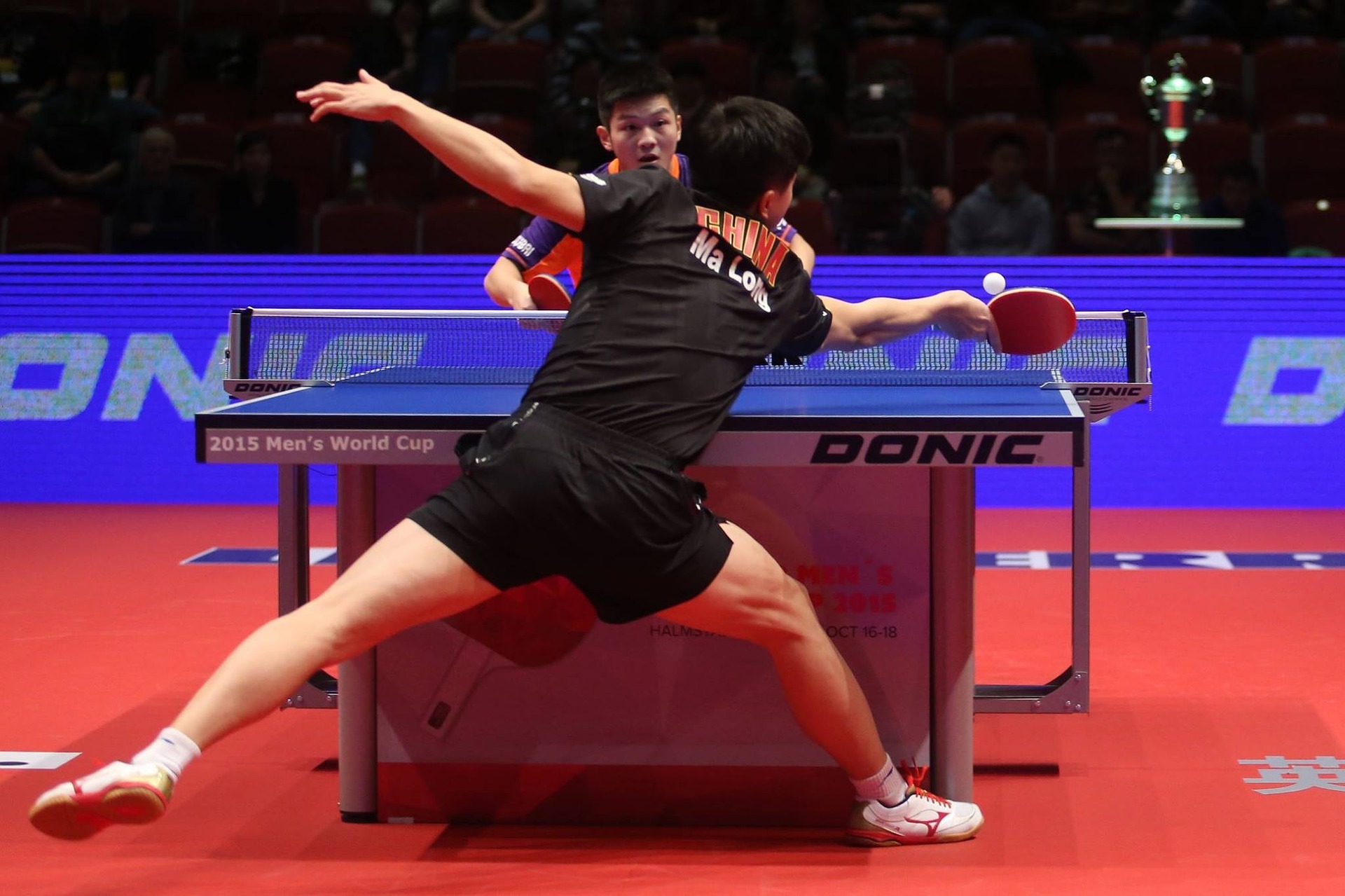Table tennis is considered one of the most popular indoor games all over the world. From England to China, the game has put down roots.
But why is it so prevalent? Here are 7 interesting and fun facts about table tennis that might explain this phenomenon.
1. The game has English origins.
No one can pinpoint exactly who or when table tennis was invented. However, most historians agree that it began in Victorian England.
During this time, the Great Britain was highly interested in lawn games like tennis. Soon, they’ve brought the game indoors in the form of table tennis.
This new form of tennis soon became a popular parlor game. Upper-class to middle-class Victorians would turn their dining tables into miniature lawn tennis field.

The first paddle was the back of a cigar box, and the first net was improvised stacks of books.
The first ball is a ball of string, a rubber ball, or a champagne cork.
At this time, the game was called several different names: Whiff-Whaff, Gossamer, and Flim Flam.
Most of these names were derived from the sound the ball made when it hit the table back and forth.
In 1901, an English manufacturer J.Jaques & Son popularized the name Ping-Pong. In 1920, the name of the sport was officially changed to table tennis.
2. An entrepreneur trademarked the game.
In the International Table Tennis Federation’s records, the first person who tried to patent the parlor game “table tennis” was James Devonshire.
He filed the patent in 1885 but abandoned it two years after.
However, it was John Jacques, the founder of the famous sports manufacturer John Jacques Ltd., who was credited with commercializing Ping-Pong.

In 1901, Jacques laid the first official rules of the table tennis game. He called the game Gossima.
Meanwhile, his competitors used the names Whiff-Whaff and Flim Flam. Because Gossima did not stick, he re-branded it into Ping-Pong.
At the same time, he launched a celluloid Ping-Pong ball. This ball made the game easier to play. Soon, it became popular among the masses.
Though many countries and players are using the name table tennis to refer to the game, there are still those who refer to it as Ping-Pong.
Some argue that table tennis and Ping-Pong are different games as they have different rules.
However, the Ping-Pong Association and Table Tennis Association merged before they were dissolved in 1904.
According to the International Table Tennis Federation, the official regulator of the game, only amateurs still call the sports Ping-Pong. Professional players now call it table tennis.
Also Read: Ultimate Guide To The Best Ping Pong Paddles
3. Table tennis dominates Asia.
In the 20th century, table tennis became a huge craze that took Central Europe by storm. However, its fame was short-lived as it soon faded.
In 1920, the game was revived. In Berlin, the International Table Tennis Federation was formed.
In London, the first worldwide table tennis championship was held. All over the globe, Ping-Pong organizations were built.
There’s no doubt that table tennis started and was popularized on the western side of the world.
However, in 1950, Asians countries began to take an interest in the sport. In 1952, Mumbai held Ping-Pong Championships.
In the competitions, it was Asians and not Europeans who dominated.
The penhold grip, one of the two common table tennis grips, is a style of play that originates from China. It is commonly used by Asian players.
The game is still popular nowadays in East Asian regions like Japan, Taiwan, South Korea, and China.
4. Table tennis is China’s national sport.
Table tennis had left a huge impact in China that in the 1950s, Mao Zedong declared it as the country’s national sport.
Some say that the decision was made because the International Table Tennis Federation recognized the communist China.
Some say that Mao thought it was the most logical sport as it was cheap and did not require much space.
In 1959, the country won its first World Ping-Pong Championship. Now, they hold more Olympic gold medals for table tennis than any other country.
In the 2016 Summer Olympics alone, China won 28 among 32 gold medals.
Reports say that 10 million Chinese play or has played table tennis competitively, and 300 million Chinese play the game occasionally.
The country offers an intensive training program for those who represent their country in the championships.
In fact, they begin recruiting for talents at a young age. The players train at least seven hours every day.
The top players practice with specialized partners and sometimes play against two.
The intensive table tennis training is paired with extensive research and strategic analysis of the competition.
Thus, it’s not at all surprising that China reaps the most wins during games.
5. The game was an effective diplomatic tool.
Since the communist revolution of Mao Zedong in 1949, Cold War, diplomatic silence, and trade embargos hanged between China and the United States.
These two superpowers met on the battlefield during the Korean War. However, for 20 years, no American had set foot in China.
Then, in the 1970s, both nations finally became open to negotiations.

There were secret communications, but the first real breakthrough happened in the 1971 World Table Tennis Championships in Japan.
During this championship, a 19-year-old US tennis player, Glenn Cowan, hopped on the Chinese national team’s shuttle bus.
Most Chinese players eyed him suspiciously. However, the team’s best player, Zhuang Zedong, spoke to him through an interpreter and gave him a gift.
The next day, Cowan returned the gesture by giving Zhuang a t-shirt. This event was later referred to as the Ping-Ping diplomacy.
When the US team was preparing to go back to their country after the championships, Mao shocked the world.
He invited the American players to pay a visit to China. And the US team crossed behind the Bamboo Curtain, becoming the most important American diplomats at the time.
The action marked a major shift in international alliances. In 1972, President Richard Nixon finally paid China a personal visit.
Also check out: 9 Best Ping Pong Tables - Ultimate Guide
6. The game was banned by the Soviet Union.
The Soviet Union once declared that table tennis was harmful to the eyes. Thus, it was banned by the Stalinist activists from 1930 to 1950.
Eventually, the ban was lifted. Still, the game had never completely made a great impact on Russian citizens.
Russia has never won any Olympic table tennis medal.
In fact, they have not even rustled up a representative for the game since the Olympics in 2008 in Beijing. It is safe to say Russia is still not one of the biggest fans of table tennis.
7. The best table tennis player is a Swede.
It might come as a surprise that the best table tennis player is not a Chinese.
However, the table tennis community has agreed that Jan-Ove Waldner is history’s best Ping-Pong player.
He is so popular that China, the top country in the table tennis competition, has given him a Chinese name.
Waldner, whose Chinese name is Chang Qing Shu, is a sporting legend is Sweden and China.
He is known for his competitiveness and longevity.
He has won countless World and Olympic championship medals. Now, he is referred to as the Mozart of Table Tennis.
Conclusion
Getting to know these 7 interesting and fun facts about table tennis will help you understand the sports more deeply.
After all, table tennis is not just a game you can enjoy. It is also a national sports and a diplomatic tool. The more you get to know it, the more you will love it.


